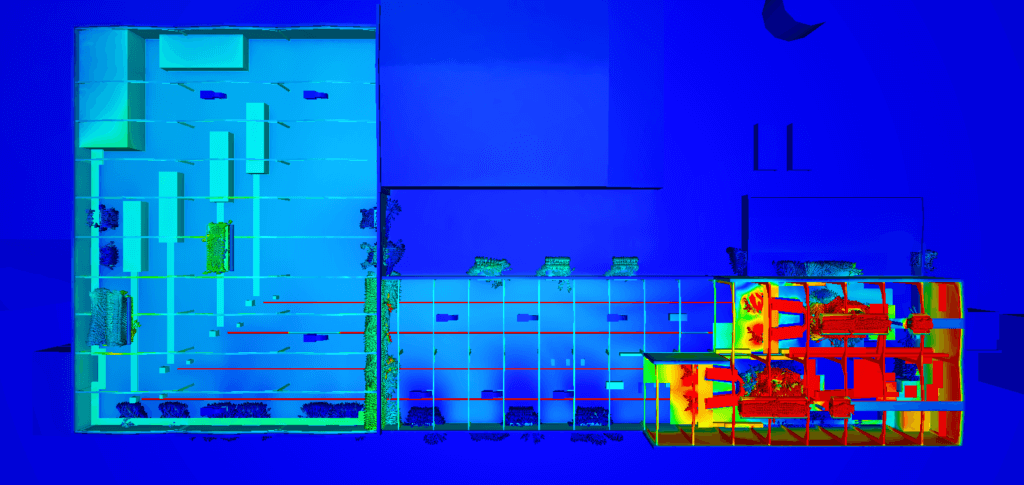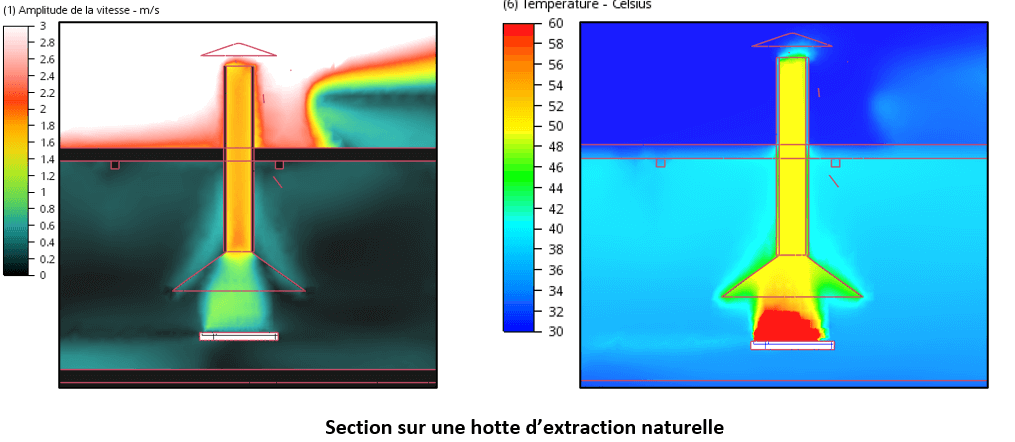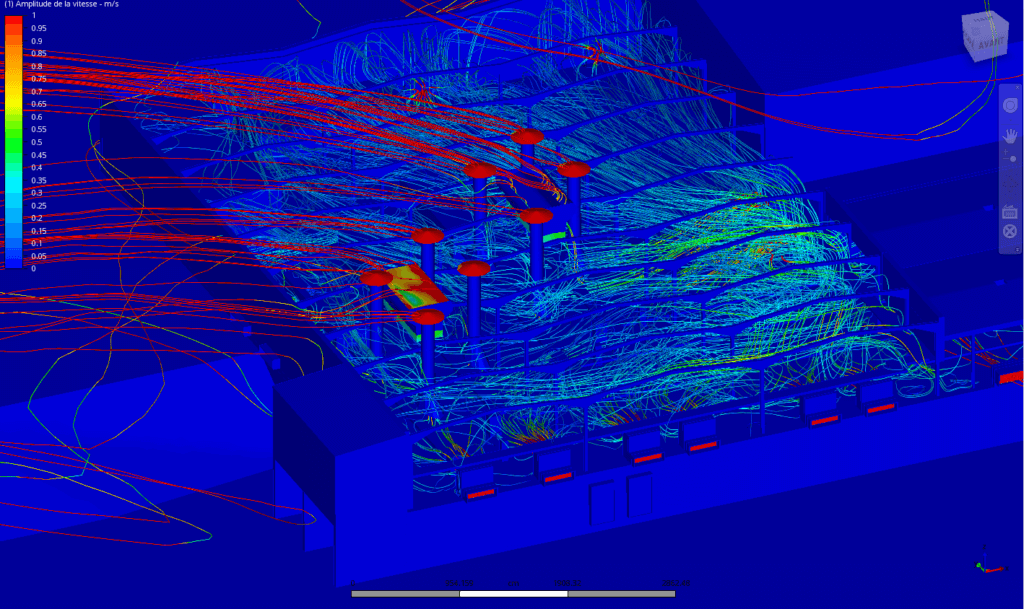Sizing of natural draft extractor hoods
EOLIOS Ingénierie realized the dimensioning of extractor hoods in natural draft for an industrial production hall.
Sizing of natural draft extractor hoods
Year
2021
Customer
Industry
Location
France
Typology
Air quality
Continue browsing :
Our other projects :
Latest news:
Description of the mission
Natural draft sizing for burners with hoods
Within the framework of an industrial production hall equipped with gas burners, the teams of EOLIOS Engineering realized the dimensioning of extraction hoods of calories in natural ventilation. From an existing CFD model, making it possible to take into account all the dimensioning phenomena such as the air connection of space in high depression, the shape of the roof, and the impact of the surrounding buildings and mainly the distribution of different thermal sources, high precision CFD simulations were carried out.
Study of natural draft by CFD simulation
The calculation of the natural draught is decisive for the dimensioning of the ventilation and air conditioning systems. However, there are many variables that affect the performance of the system and this can make it difficult to predict .
CFD (computational fluid dynamics) simulation is a very effective tool for modeling flows and ventilation processes, and it is very useful for studying systems based on natural drafts. These simulations offer accuracy and flexibility that can help understand fluid behavior and improve the design of ventilation systems. It was able to help predict fluid behavior, determine the effect of pressure changes, and estimate the airflow rate out of the systems. It could also be used to study the system under critical conditions.

What main criteria were taken into account to calculate the thermal draft?
In the CFD study conducted by EOLIOS all the dimensioning factors were taken into account. First, the 3D model accurately reflects the size and shape of the parts, their location, orientation and interface with the exterior.
In this way, we were able to determine pressure coefficients in relation to meteorological conditions and the particular topography of the site. Next, we determined the set of heat sources and their effects on the internal airflow.
Other boundary conditions such as hot and cold air sources (fans), parasitic air inlets and outlets, and internal obstacles that could affect air flow have been integrated.


What were the main conclusions of this mission?
EOLIOS Ingénierie, engineering office in fluid mechanics, utilisCFD simulation for prédire and optimiser natural ventilation dyears of applications industrielles. During this study, the fume hoods could be sized based on the main process constraints and the proper functioning of the established thermal draft. Parasitic effects of internal air displacement, resulting from the operation of ventilation systems could have be highlighted and corrected by from the design stage.
To go further on the understanding of the phenomena governing the natural thermal draft:
Video summary of the study
EOLIOS Engineering, a office d‘etude spécialisé in mécanics of fluides, a utilisé the simulation CFD for the dimensionnement of hottes d‘extraction from calories in ventilation naturelthe dyears a hall industriel equipped with gas burner systems. For cela, of simulations CFD from haute précision have eté effectuées for prendre in compte the différents phénameènes dimensionnants tels that natural ventilation openings, the forme from the toiture and l‘impact of bâtiments invironmentnants. The facteurs pris in compte dyears the calculation from shootingage thermics comprennent the coefficients from pression, the sources from chaleon, the sources d‘air chaud and froid, the entrées and the spellies d‘air parasites and the obstacles internes. In the end, EOLIOS engineers were able to successfully size the hoods.

